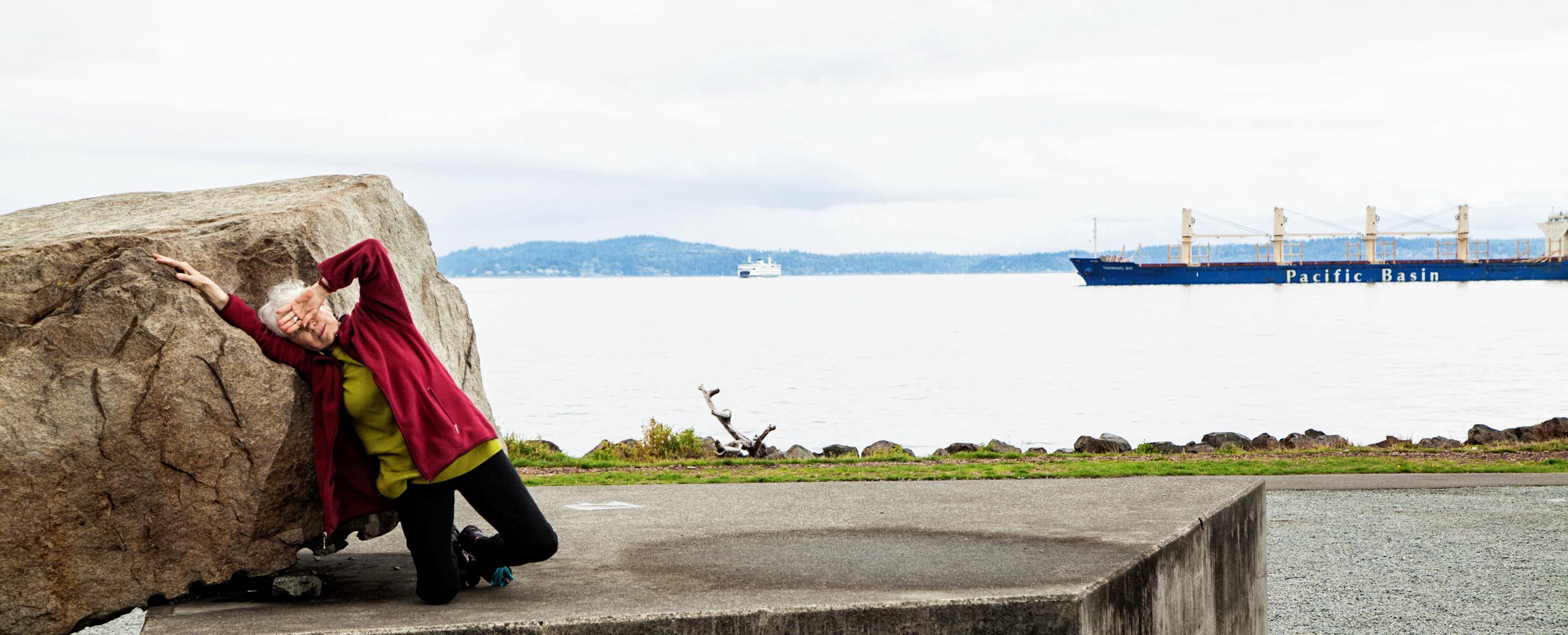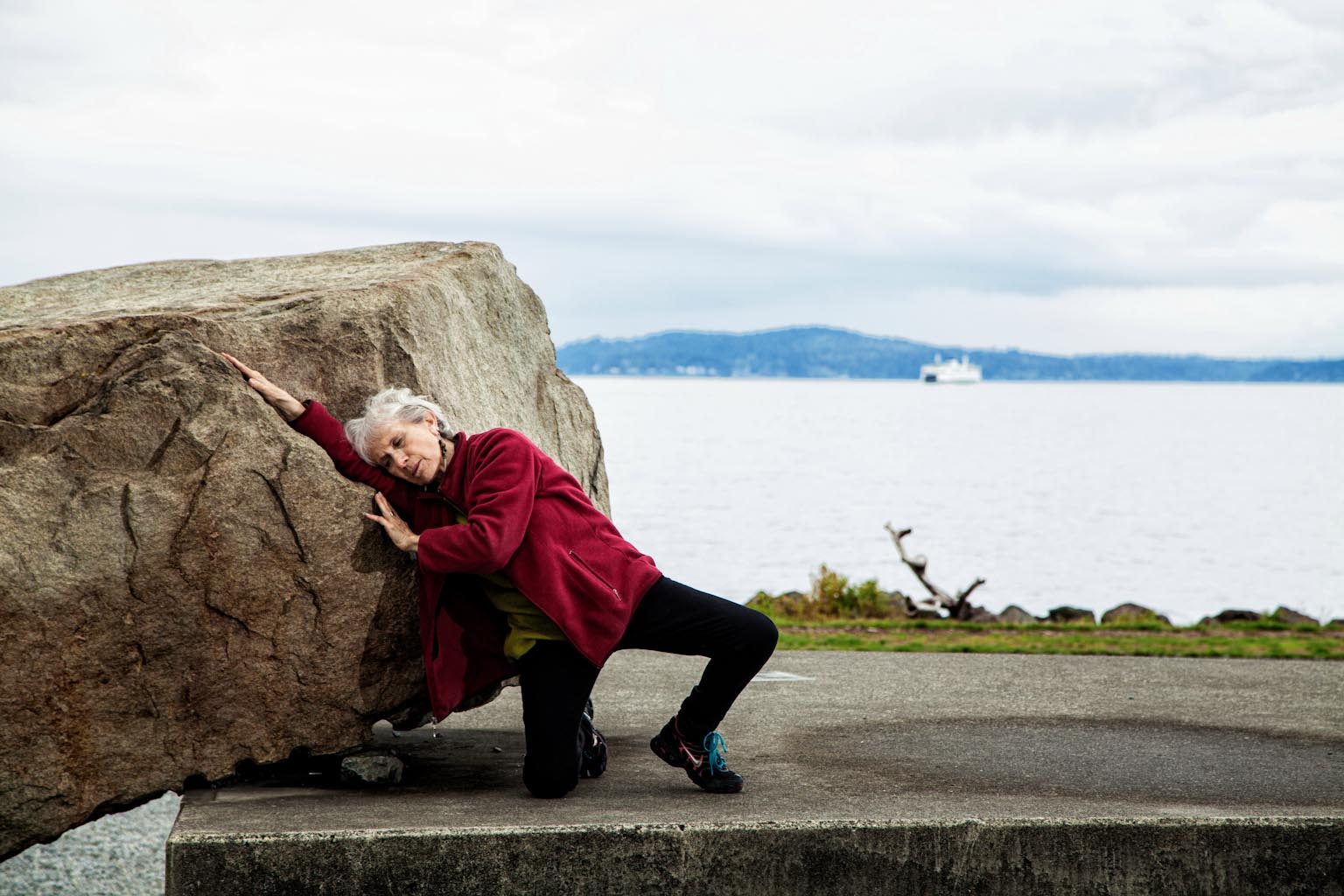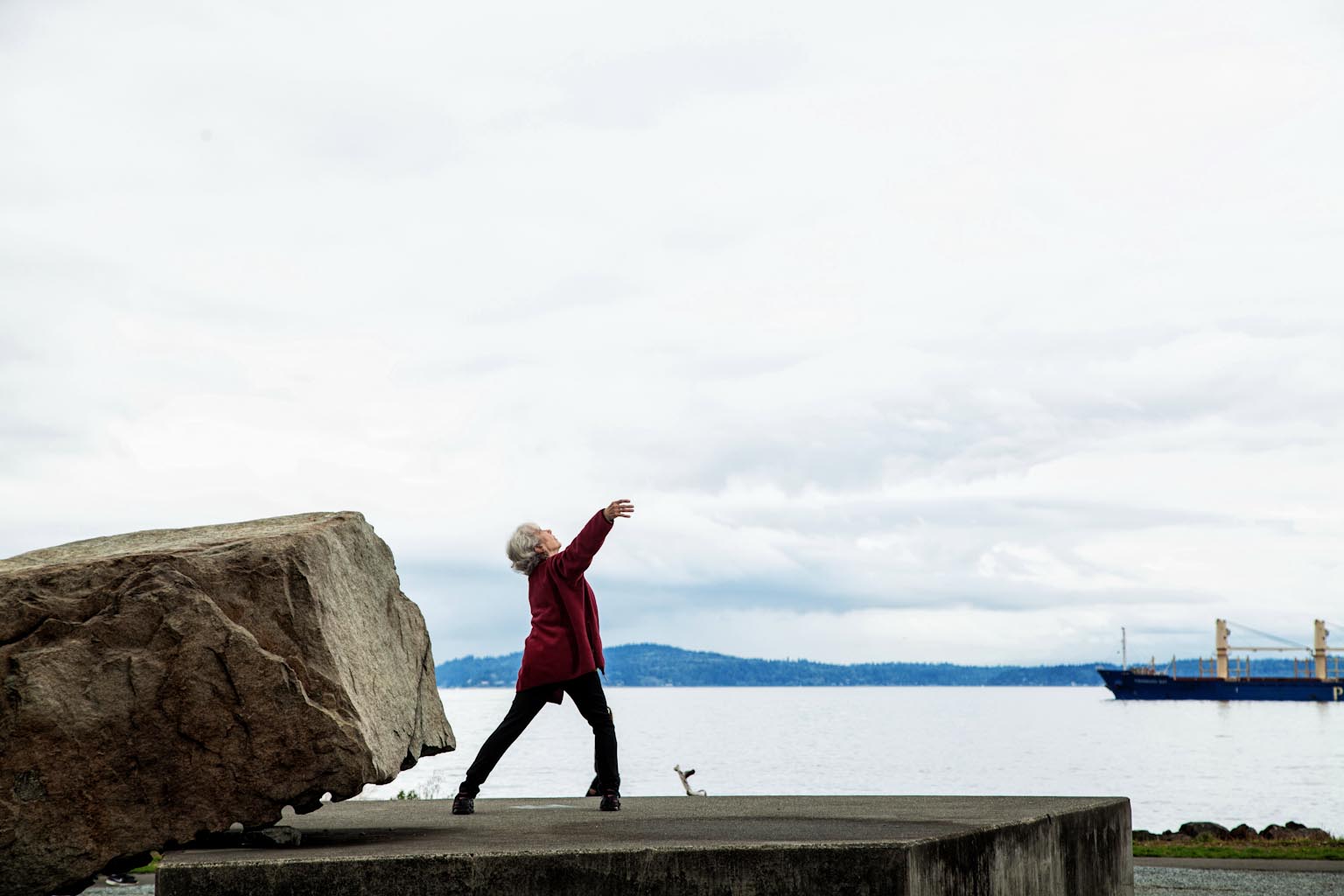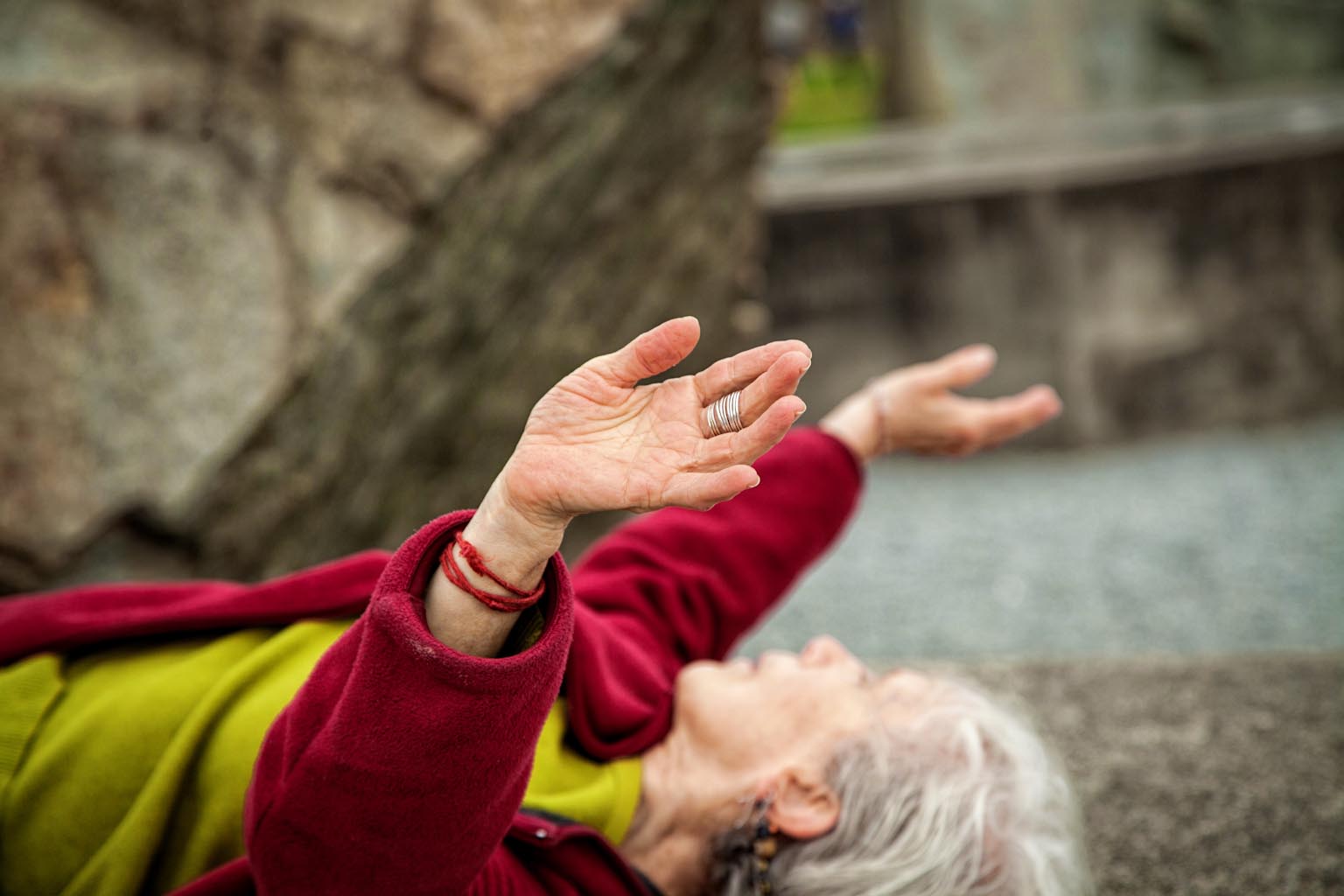A Wisdom Practice: An Interview with Tara Stepenberg
BY EMMALY WIEDERHOLT; PHOTOGRAPHS BY GREGORY BARTNING
Tara struck me as a seeker; measured, meditative and ever moving forward. Like steel, she was grounded and supported; like lace, she was delicate; like sand, she was susceptible to the pull of the tide. And it was that shifting and sifting that she at once embodied in her dance.
This interview is from the book “Beauty is Experience: Dancing 50 and Beyond.” Click here to learn more about the book, or click here to order your own limited edition copy!
~~
When did you start dancing and what have been some highlights along the journey?
I asked to go to ballet class when I was eight because a neighbor was doing it. This was in Rochester, New York. Very quickly I got hooked. My love for the form was solidified when, at age 11, I spent the summer in New York City studying at the School of American Ballet.
Knowing that I wanted a college degree, I went to the Boston Conservatory at 16, and a year later transferred to Juilliard. Those of us who studied at Juilliard in the ‘60s benefitted from the direct transmission of lineage from artists who carried the spirit and knowledge of modern dance pioneers. The students were also able to study and perform with major ballet choreographers like Antony Tudor. The teachers were heavyweights. After Juilliard, I was privileged to perform with the Anna Sokolow Dance Company.
The place where I really found my dancing ground, so to speak, was in the university world, beginning with a position at SUNY Brockport. This led to me being hired to form the dance department at Hampshire College, and also the Five College Dance Department. My first summer at Hampshire, I had to organize a conference on movement and dance, and the people I invited as guests taught the two wisdom practices I’ve stayed with forever. One was Laban Movement Analysis and the other was Authentic Movement. This was in 1972, and I’ve continued with those two practices ever since as a practitioner, teacher and trainer.
Hampshire was a fantastic incubator for faculty and students in its early years. The students were eager and open. I reconstructed several works by Doris Humphrey from Labanotated scores, and refocused my teaching approach to include Anna Halprin’s scoring as well as the improvisational techniques of Barbara Mettler and Robert Ellis Dunn. We danced on stages, in studios and in the streets.
As I literally “moved on,” I had the fabulous opportunity of being the education director at the Laban/Bartenieff Institute of Movement Studies. I loved working with adult learners and with a faculty deeply committed to the process of understanding how thought and feeling come into form via the language of movement. Teaching at Naropa was another special environment where dance, dance therapy and meditation fed each other.
Since moving to Seattle in 2002, I’ve primarily taught Pilates privately and for about five years full-time at Pacific Northwest Ballet. While I work with people of all ages and at various stages of age and health, I love being in the midst of dancers. I have been only peripherally involved with the modern dance community until recently; I performed in a piece by Wade Madsen last year, which was a richly satisfying treat.
What does your current dance practice look like?
Part of my dance practice is Pilates because it’s a decent workout. The other part is Bartenieff Fundamentals. I also do a regular Authentic Movement practice.
Authentic Movement began with a woman named Mary Whitehouse, who was both a Graham and Wigman dancer. She became interested in moving in a way that arose from impulse without preconceived form. Authentic Movement is about listening to impulses that arise from sensation, image, emotion or the collective. The idea is to combine “I am moved” with “I am being moved” so the movement comes from the body and isn’t being directed by the mind in any way.
What is your motivation to dance, and how has it changed over time?
I have shame around the fact that when I was young, some of my motivation was competitive. I wanted to be the best.
Now, I dance because it’s my wisdom practice. It’s similar to a meditation. It’s necessary in how I experience myself.
Besides identifying as a dancer, I’ve always identified as a seeker. Movement is the primary vehicle for experiencing myself in the world, both externally and in my mind.
What does the idea of success mean to you? Do you feel you’ve achieved some measure of success?
I chose academia as a home base for my professional development and creativity. There was a reliable financial base, and ready “body-minds” for performance, choreography and movement research. In the modern dance world, academia is a primary route for the training of dance performers and educators, and also cultivating dance therapists who are using the medium of dance to positively affect the lives of those suffering internal and external trauma. The program I developed at Hampshire College addressed physical practice, creative sourcing and forming, performance, movement literacy and analysis, movement within a context of education, therapy and healing. That vision has stayed and grown long after me, and that feels good.
What do you perceive is your legacy?
I am fortunate to be of the generation that studied with 20th century masters, and I hope I passed on something of their wisdom to my students. I have taught hundreds of students and worked with many clients in movement-based intelligence. Several of my students have become leaders in the worlds of professional dance, somatic movement based therapy and dance/movement education. Delightedly, they have surpassed me, their initial teacher. I acknowledge them and I have received acknowledgment from them, and that is sufficient for me in this lifetime.
Do you think you’ll ever stop dancing?
No. I once tried to file for divorce from dancing. I wrote out a card and gave it to a friend to keep. That was in the early ‘80s. I needed to do that so dance wouldn’t be about competition. It would just be because I wanted to do it.
What advice would you give to a younger version of yourself, or to a younger generation of dance artists?
I would tell my younger self to be fearless; have courage to be all that I might be.
As for advice for others, I want to share someone else’s words: “Know your truth. Stick to the process. Be free of the outcome.” By Boyd Varty from The Cathedral of the Wild.
Any other thoughts?
The balance between career and family is important, especially for women. I’ve had three children and two marriages. When one has a passion and a family, everything is bent a little to accommodate both of those treasures. I think it’s unavoidable, so it’s important to be okay with that.
~~
Tara Stepenberg, a Juilliard graduate, founded the dance department at Hampshire College in 1971. In addition to her dance studies, she is a long-time practitioner of Authentic Movement. She has been involved with the Laban perspective since 1972, directing the certificate programs at Laban/Bartenieff Institute of Movement Studies for several years. She is currently on the conditioning staff at Pacific Northwest Ballet, has a private practice in somatic resonance, and is completing her studies in BodyMind Psychotherapy with Susan Aposhyan.
This interview is from the book “Beauty is Experience: Dancing 50 and Beyond.” Click here to learn more about the book, or click here to order your own limited edition copy!




